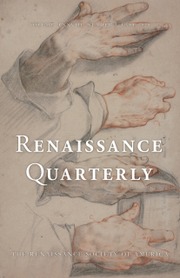This edited volume adds compelling facets to existing scholarship on the concept of time during the late Middle Ages and Renaissance, and it deserves to sit alongside Jacques Le Goff’s Pour un autre Moyen Âge (1980), Time in the Medieval World (ed. Colum Hourihane, 2007), and Simona Cohen’s Transformations of Time and Temporality (2014). The book’s readership should include historians of religion, culture, science, and art, and anyone interested in Rome, the city on which the book is focused.
Despite the presence of six authors, each with their own primary and secondary sources, there is concordance on key points. In Rome, this historical moment was characterized by the coexistence and interchangeability of old and new traditions about time; such temporal variance and variability was met with acceptance, rather than aporia—a bit like our twelve- and twenty-four-hour systems. Across the contributions, we discern that in temporal matters the inertia of convention prevailed, which explains the endurance of the Roman system comprised of kalends, nones, and ides over the modern one. Additionally, time was local, personal, and self-serving, as evidenced by the grassroots efforts to control and organize it, which betray few borrowings from outside the Eternal City. The revolution of the mechanical clock and its regular hours—as profound for time as cannonballs were for warfare—did little to alter Romans’ open-ended attitude toward time.
The first chapter, by Tuomas Heikkilä, claims that time is central to matters of control, preservation, and remembrance. Key concepts such as individual and communal time, or regular and fluid time, are explained; and finally, the authors—all part of a research group at the Finnish Institute in Rome—are introduced. In chapter 2, by Saku Pihko, we learn about the nitty-gritty process of canonization of Francesca Romana. Aware of the caveats and shortcomings of diary entries and canonization documents, the author skillfully triangulates between them to examine personal and official attitudes toward time. Jasmin Lukkari’s third chapter explores the Jubilee of 1300 as an effort by Pope Boniface VIII to recast and control time. The fourth chapter, by Urpo Kantola, considers temporal references in specifically non-funerary inscriptions from 1000 to 1527. Earlier studies (by Forcella, Kajanto, et al.) are mined and refined to extract trends and patterns that corroborate Kajanto’s observations about the impact of humanism on funerary inscriptions—perhaps a sign that epigraphic genres are distinct today, but less so in the past. The next three chapters—a sort of book within the book—are by Holger Kaasik. Chapter 5 reads like a dissertation; fortunately, the next two chapters compensate by demonstrating how, in their ability to mark repeating acts of religious commemoration, Roman calendars served like spiritual metronomes. The final chapter is penned by Marko Halonon. Beyond its opening paragraph—a succinct and delicious definition of the role of calendars—one encounters an intellectually rigorous discussion of the astronomical, agricultural, and commercial forces at play in juridical, personal, and ecclesiastical calendars. Its implications reach beyond Rome. Four appendixes close the book.
A few—admittedly minor—gripes include: first, the index, which lists individuals and places, but not concepts or things; accordingly, one is unable to search how the different authors address recurring topics such as “temporal fluidity,” “books of hours,” or even “clocks.” Second, occasionally incorrect or clunky syntax are a small price for the privilege of reading fresh scholarship from Finland. Third, the absence of images—notable given the elevated cost of the volume—leaves readers guessing and relying on mere description to visualize the physical evidence treated by authors.
Future explorations that the volume piqued include the closing and opening of city (or ghetto) gates to mark time; bells and bell-ringing—a topic explored recently at a conference by A. Rodriguez Suarez and E. P. Pignatiello; moreover, what exactly counts as “Rome”? Had the chapters included evidence from the possessions of Roman monasteries or from the See of Peter, would we encounter echoes and repercussions of Roman attitudes toward time? And as an art historian, I wonder about personifications of time and how the study of manuscript and epigraphic traditions might be complemented by painted calendars, of which there were many in and around Rome.



